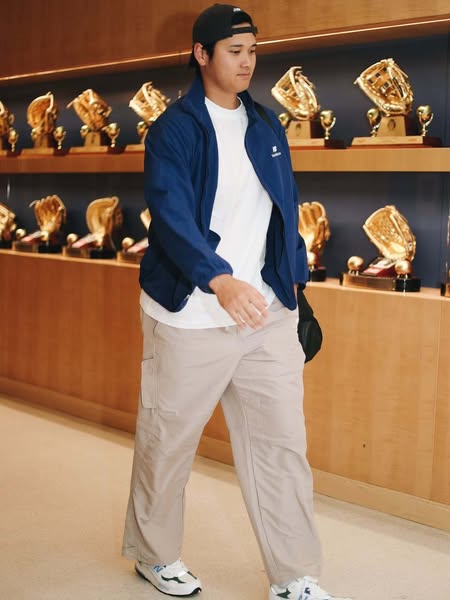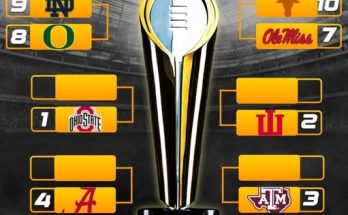Shohei Ohtani is not just redefining what it means to be a baseball player — he is breaking every traditional boundary the sport has known. In a game that has long compartmentalized roles — pitchers pitch, hitters hit — Ohtani stands tall as a revolutionary figure, excelling at both with an ease that feels almost supernatural. As Japan’s two-way superstar continues to dominate Major League Baseball, his impact transcends stat sheets and highlight reels. He is not only shattering records but also inspiring an entirely new generation of players, fans, and dreamers from all corners of the globe.
Born in Oshu, Iwate, Japan, Ohtani was a prodigy from the start. Even as a teenager, his 100-mph fastball and towering home runs caught the attention of international scouts. He joined the Hokkaido Nippon-Ham Fighters of Nippon Professional Baseball (NPB), where he quickly developed into a sensation. But it was his decision to come to Major League Baseball — and the way he demanded to be allowed to both pitch and hit — that changed everything. At a time when many believed the two-way player was a romantic notion from baseball’s distant past, Ohtani showed the world it could not only work in the modern era — it could thrive.
Ohtani signed with the Los Angeles Angels in 2017 amid great anticipation and intense scrutiny. Questions loomed about whether his body could hold up under the dual workload, whether MLB hitters would figure him out, or if major league batters would overpower his pitching. But from the moment he stepped onto the diamond, Ohtani proved to be a once-in-a-century talent. In 2018, his rookie season, he slugged 22 home runs while posting a 3.31 ERA on the mound — a performance that earned him the American League Rookie of the Year award and silenced many doubters.
Still, what makes Ohtani truly mesmerizing is not just his skill but the manner in which he brings joy and energy to the field. He doesn’t simply hit home runs — he demolishes them with majestic arcs that captivate fans and leave pitchers shaking their heads. He doesn’t just pitch — he unleashes a blistering fastball, a deadly splitter, and a sweeping slider that confound even the most seasoned hitters. Watching Ohtani is witnessing artistry in motion, a fusion of raw power and refined technique wrapped in quiet humility.
In 2021, Ohtani elevated his game to historic levels. That season, he became the first player in MLB history to be named an All-Star as both a pitcher and a hitter. He launched 46 home runs, stole 26 bases, and maintained a 3.18 ERA over 130 innings. That performance earned him the unanimous AL Most Valuable Player award, with fans and analysts alike calling it one of the most remarkable seasons in the history of professional sports. It was a year in which comparisons to Babe Ruth became not only acceptable but necessary. And even then, many argued that Ohtani was doing things Ruth never did — and perhaps never could.
But beyond the awards and accolades lies something more significant: Shohei Ohtani is reshaping the perception of what is possible in baseball. He is not confined to a single lane. He’s not limited by past conventions. He challenges every assumption about how the game is played and how players are developed. Young athletes who once had to choose between being a pitcher or a hitter are now looking at Ohtani and thinking, “Why not both?” In this way, his influence is generational, planting seeds of ambition that could alter the game’s future for decades.
Ohtani’s impact also carries enormous cultural weight. As a Japanese player thriving in the United States, he is a beacon of pride for his homeland and a bridge between cultures. Japanese fans wake up at odd hours to watch his games live. Japanese media covers his every move. Children in Tokyo parks swing imaginary bats like Ohtani, then mimic his pitching windup. In a world that often feels divided, Ohtani’s transcendent talent has created a shared language, one spoken in stadiums and living rooms from Anaheim to Osaka.
His popularity is not restricted to baseball diehards either. Ohtani has become a global icon, gracing magazine covers, signing endorsement deals with multinational brands, and capturing the imagination of fans unfamiliar with the sport. He is a unifying force, capable of making headlines in sports pages, fashion spreads, and international news alike. Ohtani has even inspired shifts in team construction, with organizations now re-evaluating whether it’s time to develop two-way players again rather than force specialization at early levels.
Still, even with all the fame, Shohei Ohtani remains refreshingly grounded. He exudes a quiet charisma, often speaking softly in interviews, deflecting credit to teammates, and maintaining an almost monk-like focus on his craft. There are no outbursts, no controversies — just an intense love for the game and a tireless work ethic that has become the stuff of legend. Coaches describe him as the first to arrive and the last to leave. Teammates rave about his humility. Opponents marvel at his balance, both emotionally and physically. He carries the weight of expectation — and of history — with grace.
When Ohtani left the Angels and signed a record-breaking contract with the Los Angeles Dodgers in 2023, the baseball world again held its breath. Could he sustain this level of performance with a new team, in a new environment, under the brightest spotlight imaginable? The answer was a resounding yes. In fact, he has only grown more dominant. His bat remains lethal, his arm electric, and his leadership unshakable. The Dodgers, already a perennial powerhouse, now have baseball’s most marketable and mesmerizing star leading their charge.
And yet, it’s not just about what Ohtani is doing right now — it’s about the legacy he’s building. Every swing he takes, every pitch he throws, every stolen base or strikeout etched into the record books — they are pieces of a larger mosaic. A mosaic that tells the story of a player who refused to be boxed in. A player who defied every baseball blueprint and succeeded on his own terms. A player who chose to honor his full range of abilities, not diminish them for the sake of comfort or convention.
In every sport, there are figures who do more than play — they redefine. Michael Jordan did it in basketball. Serena Williams did it in tennis. Lionel Messi in soccer. And now, Shohei Ohtani is doing it in baseball. He is expanding the limits of imagination within the game, proving that greatness doesn’t have to come in parts. It can be whole. It can be two-way. It can be Shohei Ohtani.
For kids growing up on ballfields across Japan, America, and beyond, Ohtani is not just a role model — he’s a revelation. He is showing them that it’s okay to dream bigger, to be different, to try what others say can’t be done. He’s motivating with his actions, speaking volumes in silence, turning doubters into believers one swing, one pitch, one game at a time.
Shohei Ohtani is more than a superstar. He is a movement. A monument in motion. A modern myth forged in real time. And in a world increasingly desperate for awe, inspiration, and boundary-breakers, Ohtani is delivering it all — with every crack of the bat and every flash of the glove. As long as he’s on the field, the game of baseball will never be the same. And that might be the greatest gift he’s giving us all.



